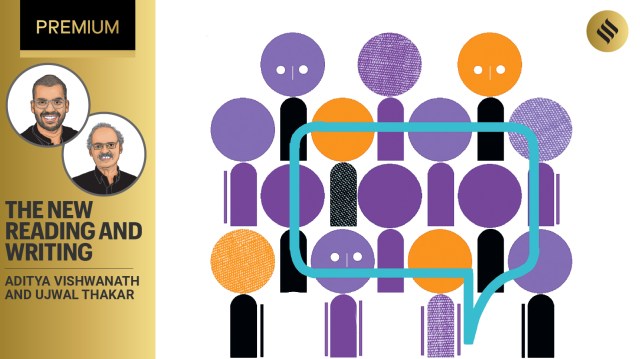
In 1947, India’s literacy rate was just 12 per cent. Today, it exceeds 75 per cent — a transformation that fuelled economic mobility, global competitiveness, and innovation. But literacy is evolving. Just as the industrial era demanded reading and writing, the AI era demands a new kind of fluency: AI literacy.
For centuries, societies have treated reading and writing as foundational literacies — not just skills, but levers that unlock economic mobility, political participation, and technological progress. The ability to read and write has been directly tied to economic productivity, global competitiveness, and social mobility, and nations that invested in universal literacy saw disproportionate growth in human capital and innovation.
Today, we stand at a similar inflection point with artificial intelligence (AI). Just as past generations prioritised literacy as a fundamental right and a strategic necessity, we must now make the case for AI literacy as an essential skill for the next generation of young Indians. AI is no longer confined to research labs or software firms — it is embedded in our workplaces, our classrooms, our banks, our courts, and even our entertainment choices.
If “AI is the new electricity’” powering change in unseen ways, then AI literacy must be the new reading and writing. The ability to understand, interpret, and apply AI will define who creates the future and who merely consumes it. The question is not whether AI will reshape the Indian economy — it already is — but whether young Indians will have the agency and skills to shape AI rather than be shaped by it.
Computational thinking (CT) — promoted in the early 2000s by scholars like Jeannette Wing of Columbia University — was envisioned as a foundational skill for every child, comparable to maths or reading. It emphasised problem-solving, abstraction, and designing solutions rooted in computational logic.
While countries globally have embraced CT within K-12 curricula, India’s journey has been slower and largely industry-centric, often reduced to IT sector-focused skilling programmes and crash courses. This narrow approach is insufficient. Comprehensive AI literacy must now encompass all layers of Indian society — from foundational K-12 education to extensive higher education programmes, targeted workforce training, inclusive micro-courses for diverse non-technical professions, and broad-based, culturally aware initiatives aimed at AI literacy for the masses. Every Indian, regardless of geography, age or occupation, should have the opportunity to engage with AI literacy deeply and meaningfully.
But what does AI literacy actually mean? Here are three distinct ways to define it.
One, AI literacy as “human-AI collaboration”. Understanding how AI systems work and how to effectively collaborate with them as co-pilots, rather than being passive users. Two, AI literacy as “critical AI awareness”. The ability to interpret and critique AI-generated content, recognising bias, fairness, and ethical implications in automated decision-making. Three, AI literacy as “problem-solving with AI”. The capacity to design, apply, and creatively leverage AI to solve real-world challenges, regardless of whether one is a programmer or not.
Most importantly, AI literacy is not just about coding. While programming is one way to engage with AI, true AI literacy is about cultivating a mindset of problem-solving, abstraction, and systems thinking — skills that are essential for any profession in an AI-driven world. Just as literacy isn’t about turning everyone into novelists, AI literacy isn’t about making everyone AI engineers. It’s about ensuring that all Indians understand how AI shapes their lives and how to engage with it critically and productively.
For decades, India has powered the world’s back-office operations, IT consulting, and business outsourcing, establishing itself as a global software services hub. While successful economically, this model constrained India’s role as a global innovator.
Today, AI presents India with an unprecedented opportunity. The question we must now answer is: Will India continue its role as a mere service provider in the AI revolution, or step forward as a global innovator? India’s potential is already emerging — from Wadhwani AI’s agricultural solutions to Sarvam AI’s generative AI breakthroughs. Scaling such innovation requires deep investment in AI education, research, and entrepreneurship. Unlike the software revolution, where India primarily provided labour, the AI revolution demands intellectual capital and homegrown AI leadership.
A national initiative for AI literacy is critical. Policymakers must integrate AI into school curricula, industries must invest in workforce skilling, and civil society must ensure equitable access — so no Indian is left behind in the AI age.
This opinion piece is the first in a series exploring India’s pathway to becoming a global AI innovator. Each article (co-authored with industry, policy, or education experts) dives deeper into critical aspects that India must address, including the following. One, developing a national K-12 AI literacy curriculum, ensuring AI education reaches every student, public and private, rural and urban alike. Two, establishing experiential AI maker labs and tinkering spaces in learning environments nationwide, promoting hands-on, practical AI learning. Three, investing in AI and the future of work, emphasising broad-based tech and data literacy, workforce reskilling, and preparing youth for an automated and evolving employment landscape. Four, cultivating AI literacy for the masses, ensuring that contextually and culturally sensitive AI literacy initiatives are accessible to every Indian. Five, launching a national AI literacy platform or movement that connects diverse stakeholders — governments, businesses, educators, and civil society — to drive forward India’s AI literacy mission.
AI literacy is not optional — it is a cornerstone of India’s future competitiveness, innovation, and societal well-being. India’s literacy movement unlocked human potential and transformed the economy. AI literacy is the next great unlock. The question is: Will we lead, or will we lag?
Vishwanath is co-founder of MakerGhat and Inspirit and a visiting research scholar at Stanford University and Thakar is chairman of the board of Educate Girls. This article is the first of a series on AI in India